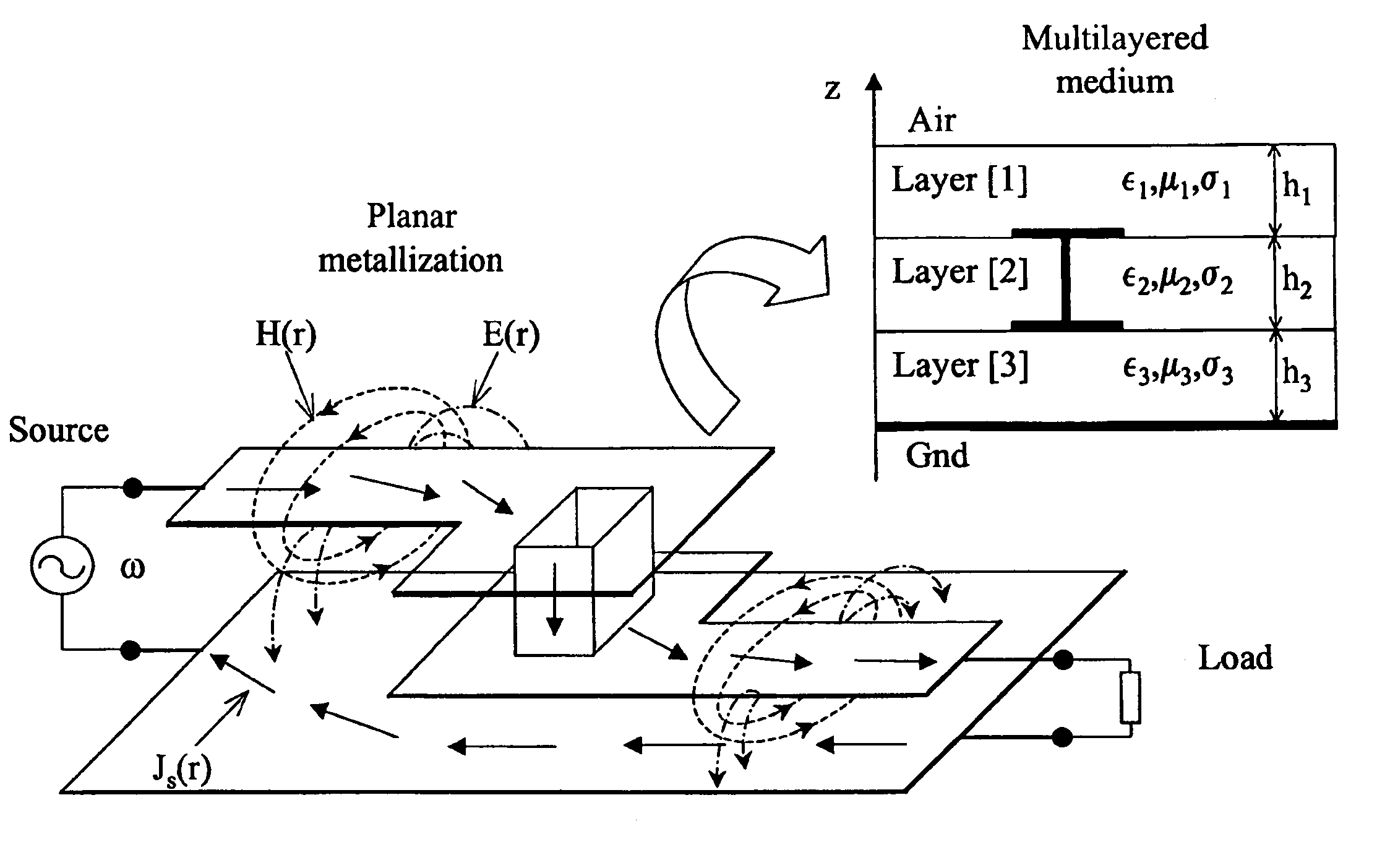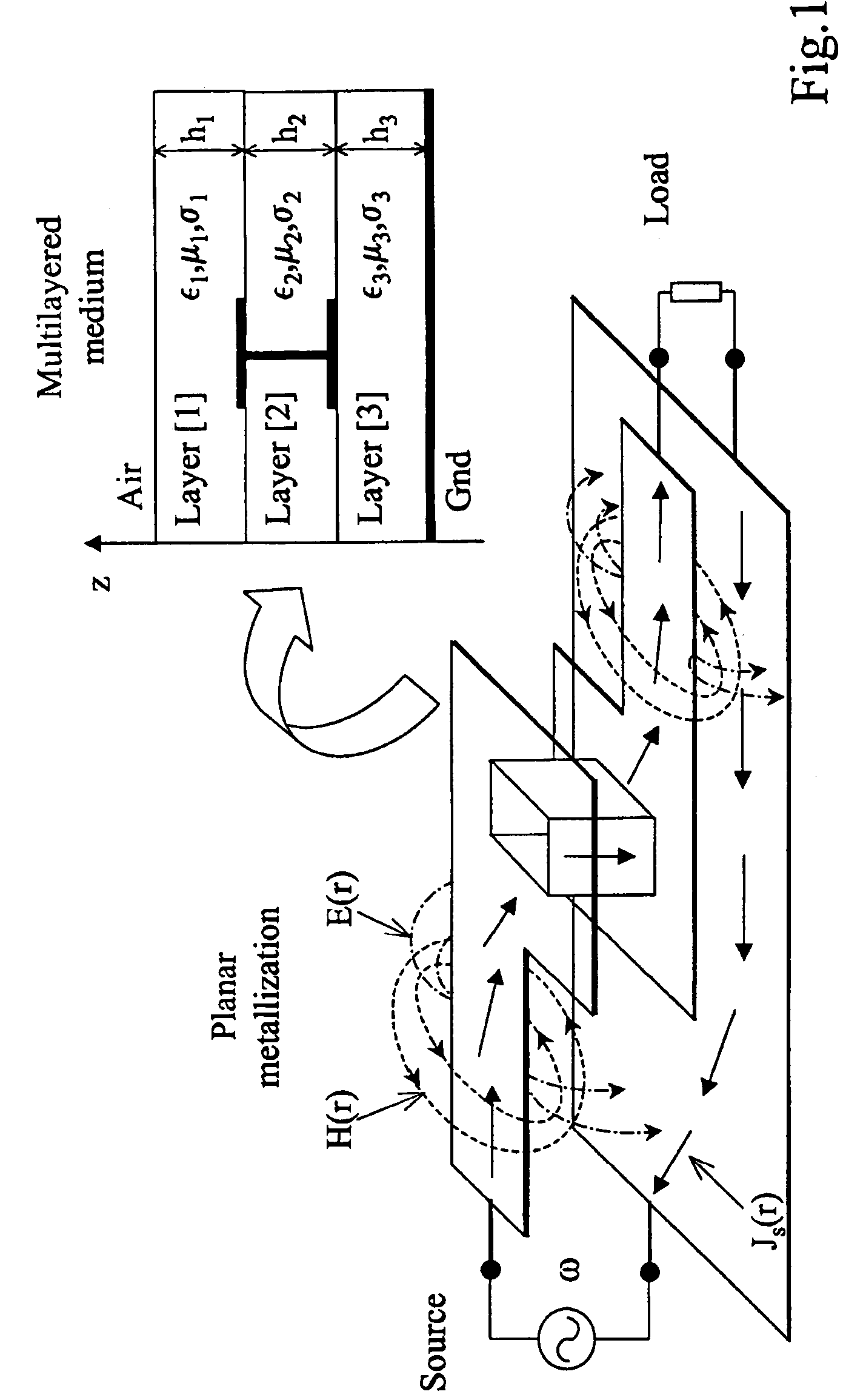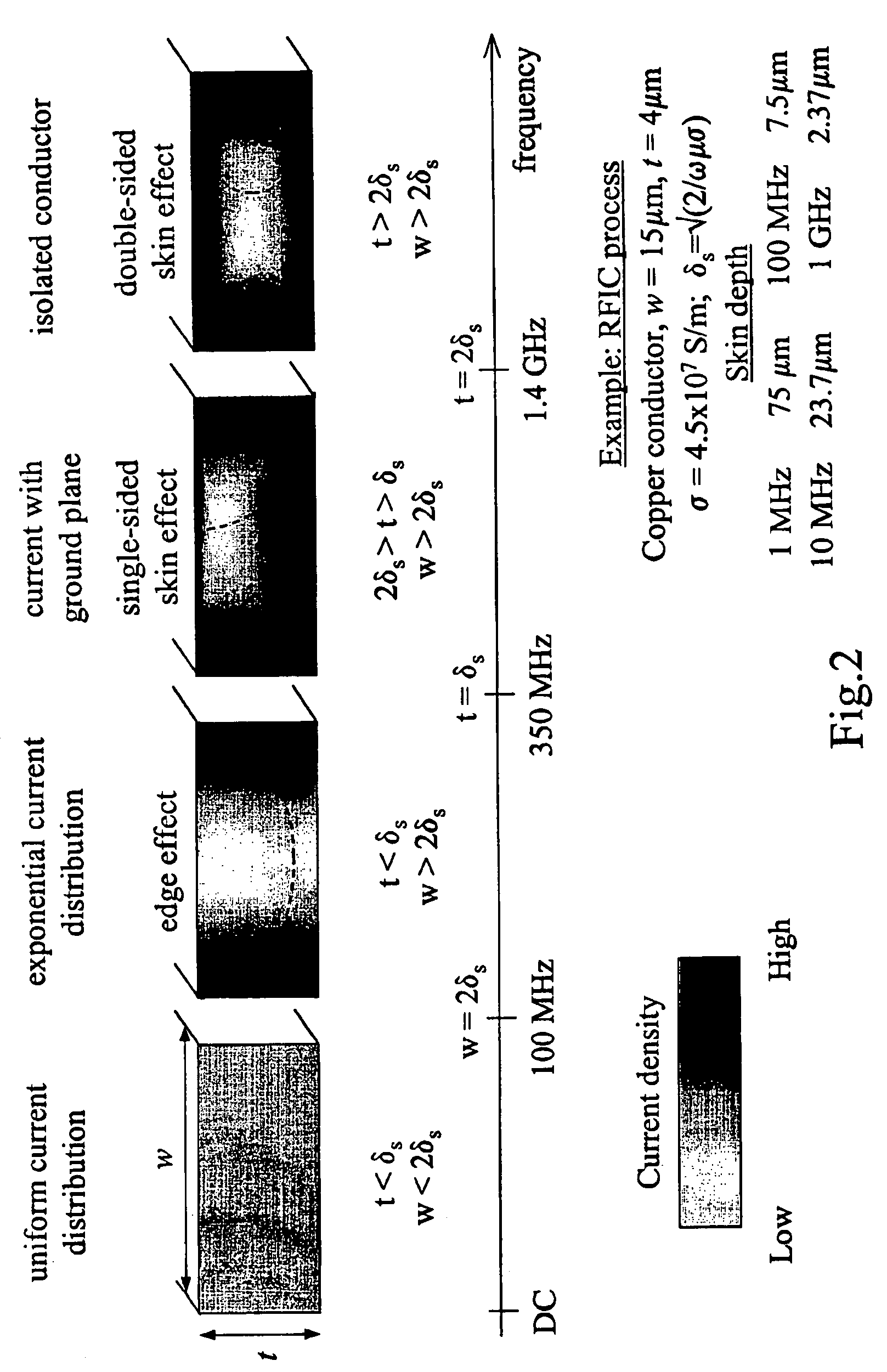Modelling current flows in three-dimensional conductive and dielectric bodies
a technology of conductive and dielectric bodies and current flows, applied in the field of model only providing good, infinitely thin conductor approximation is not justified for on-chip interconnection, infinitely thin conductor approximation is no longer valid,
- Summary
- Abstract
- Description
- Claims
- Application Information
AI Technical Summary
Benefits of technology
Problems solved by technology
Method used
Image
Examples
Embodiment Construction
[0077]For convenience an example implementation of the invention will be described in the context of electronic circuit design, using apparatus as shown in FIG. 8 for simulating operation of an electronic circuit.
[0078]Referring to FIG. 8, the apparatus comprises a processing unit 10 and a user input / output interface unit 12. The processing unit 10 includes a central processing unit (CPU), random-access memory (RAM), hard disc storage and associated circuitry to enable the CPU to implement procedures in accordance with software program instructions stored in the RAM, and to interact with the interface unit 12 to receive input from the user and display the results of the procedures. The interface unit 12 typically comprises a visual-display unit (VDU), keyboard, mouse and / or tablet or similar pointing device, and a printer or other hard-copy output device.
[0079]In preparing to perform a system simulation, the apparatus receives, via the interface unit 12, a physical description of th...
PUM
| Property | Measurement | Unit |
|---|---|---|
| length | aaaaa | aaaaa |
| thickness | aaaaa | aaaaa |
| frequencies | aaaaa | aaaaa |
Abstract
Description
Claims
Application Information
 Login to View More
Login to View More - R&D
- Intellectual Property
- Life Sciences
- Materials
- Tech Scout
- Unparalleled Data Quality
- Higher Quality Content
- 60% Fewer Hallucinations
Browse by: Latest US Patents, China's latest patents, Technical Efficacy Thesaurus, Application Domain, Technology Topic, Popular Technical Reports.
© 2025 PatSnap. All rights reserved.Legal|Privacy policy|Modern Slavery Act Transparency Statement|Sitemap|About US| Contact US: help@patsnap.com



